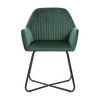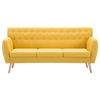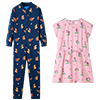Choosing the right planters for your space
Whether used indoors or outdoors, planters are a great way to add visual appeal to your space. Like a customised jacket that makes a casual ensemble look amazing, the right planters will instantly pull your space together. However, planters come in different materials, shapes, and sizes, making it difficult for the average buyer to know what to look for.
Fortunately, we’ve created this easy guide to help you find the right plant pots for your space. Whether you’re looking for a small or large planter, an indoor container, or a pot that matches your trellis, we’ll help you make the right choice, so read on!
What material should you choose for your planters?
One of the most important points to take into account when shopping for planters is the material used in their construction. Your choice of material will not only influence the look and durability of the planter but also the health of your plants. Here are the most common planter materials.
Plastic planters
Plastic planters are one of the most popular options mainly because they are lightweight and inexpensive. They can be used with a plant saucer on a balcony or deck. Furthermore, they are durable, low-maintenance, and available in a wide range of styles, making them one of the most versatile planting solutions on the market. Plastic plant pots also come in a wide range of colours and finishes to complement your décor and colour scheme. The downside of plastic is that it does now allow plants' roots to breathe. This means you'll have to report your plants regularly.
Wood planters
Since wood planters are made from a natural material, they do not pose any health problems to your plants. Wood is also a timeless classic and adds natural beauty to your space. Planters made from wood are available in different types of woods and colours. However, teak is the most popular wood for planters. Teak planters are not only elegant but also rich-looking and elegant. They have a high oil content that makes them impervious to water and resistant to rot and termite attacks. Painted wood planters also offer a great way to upgrade your outdoor area and create a unified design. The only downside of wood planters is that they are not durable.
Metal planters
The strongest and most durable of all materials, metal is one of the best materials for planters. There are different types of metal containers, but the most common materials are aluminium, stainless steel, and wrought iron. Metal plant pots won’t crack, scratch, or chip. However, they tend to rust when left outdoors. Choosing painted or powder-coated options will ensure your planters withstand the elements. Stainless steel planters are also a good option for outdoor use. The disadvantage of metal is that it's usually heavy and tends to heat up during warmer months.
Wicker planters
Wicker baskets look right at home in your garden. Unlike plastic, they are sustainable and environmentally friendly. Since they are made from natural materials, they will add natural beauty to your space in addition to holding your plants. Wicker planters often come with a plastic lining already positioned inside. If you buy a wicker basket without the plastic lining or you prefer doing it yourself, cut a bag or line to cover the entire bottom and about 7cm up the sides of the basket. Then use a strong glue to bind the two and allow them to dry. The main downside of wicker plant pots is waterlogging and moisture retention. However, adding a layer of grit to the basket will improve moisture retention.
What planter size is best?
The size of the planter is another crucial point to keep in mind. Remember, plants need space to grow and are happier when placed in perfectly sized planters. Your planter should also be size-appropriate for your indoor or outdoor space. Here are guidelines to help you find the perfect size for your plants and space.
Take into account the size of the plant
When we talk about the size of a plant, we’re referring to the diameter (distance across the top) of the container where the plant is grown, not the plant itself. So, a 10cm plant is a plant that grows in a 10cm container. With these measurements, you'll be able to choose the right planter for your plant.
Think about the plant’s roots
Choose a planter that is 2 ½ cm to 5cm wider than the size of the plant. A bigger planter is always better because a too-small container won't give the roots freedom to grow and develop, thus affecting the plant's overall health.
Choose the right height
Planters come in various heights to house the roots of the different plants. A good planter should be tall enough to accommodate the roots of your plant and leave an extra space of 2 ½ cm to 5 cm at the top for watering. Shorter planters are best suited for plants with shallow roots, while tall planters are ideal for plants with deeper roots. You also need to think about how the plant looks in the pot. Choose a plant that's at least half the height of your plant for a balanced look.
Avoid overpotting
The term overpotting refers to growing plants in large planters, which could lead to the rotting of roots and other diseases due to limited airflow. Selecting the right planter size is important in ensuring your plants receive sufficient water and nutrients.
What colour should you choose for your garden planters?
Planters come in a wide range of colours to suit your design style and personal preference. You’ll also be surprised to know that colours can hugely impact your plant's growth. The colour of the container can affect how much sunlight is absorbed and the temperature of the soil. For instance, outdoor planters in dark colours absorb more heat than lighter ones. Let’s look at the most common colours you can choose for your planter.
White
White has always been associated with purity. It also reflects a lot of natural light without making your space look too loud. You can also use them alongside dark-coloured containers to create a bold look. They are not the most striking planters but can give your space a feeling of freshness.
Beige and brown
Probably the most common colours for planters, beige and tan reflect sufficient light and don't absorb too much heat from the sun. These earthy or neutral colours elicit a sense of peace and tranquillity, which is what you need in your home. They also work with virtually any colour.
Blue and green
Considered the most versatile colour for planters, blue and green will add coolness and a feeling of relaxation to your space. They can also be paired with bold colours like yellow and red for a lively feel. However, be cautious with these colours as they tend to absorb more light and heat, thus raising soil temperature. If you're using garden planters in these colours, consider monitoring soil temperature using a thermometer, especially during summer.
Yellow
Introducing yellow planters in your garden or interior is a great way to add a pop of colour to your space. Yellow colour will also add a warm and fuzzy feel to your home. You can pair yellow containers with darker colours like purple to liven up your space. When used with medium-toned colours like teal, they create a more subdued environment.
Pink and red
These colours will add an eclectic feel to your space. They can also be paired with lighter-coloured containers. In addition, these hues bring a romantic colour to your space and are great for opening up smaller or compact spaces.
Container gardening ideas to keep in mind
The best thing about container gardening is that you don't need to be a landscape designer to place them and ensure they thrive. With a little commitment and these simple ideas, you will surely have thriving garden planters.
-
Choose the right container – When the sun is out, the soil, leaves, and roots heat up. So, if you choose a dark metal port, you risk cooking the whole pot and its contents. However, light-coloured garden planters allow your outdoor companions to thrive.
-
Plants thrive in a pot that drains – If you buy plant pots labelled 'indoor & outdoor', ensure you pop out the drainage hole before using it in your garden. Also, place a saucer under the container to prevent it from staining your patio or paved garden.
-
Pick the right soil – You might be tempted to use soil from your backyard, but your plants won't thrive in it. Choosing fertile soil that allows water and air to move around easily is important. Most importantly, use the right fertilisers.
-
Water your plants – In warmer months, water your plants at least twice a week. Check soil moisture every day and water depending on the readings.
Shop garden pots at vidaXL
Give your plants a beautiful place to grow while enhancing the look of your space with our well-designed planters. Here at vidaXL, we boast a large collection of superior-quality planters designed from high-quality materials. Available in a wide range of sizes, styles, and colours, our range of planters has something to suit your taste and design.
Even the pickiest buyers will surely find something that will accommodate their lively assortment of flowers, herbs, and plants. In addition, we only list well-known products, meaning you're guaranteed top-quality garden pots that will last for years. Browse our collection today to find the perfect planters for your space.































































